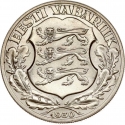You are about to finish your registration. Please check your mailbox (including spam folder). There should be a letter with a confirmation link. Check setting to make sure that your e-mail address is correct.
Send letter againDescription
The University of Tartu, located in the city of Tartu, stands as Estonia's sole classical university, renowned as the largest and most esteemed institution of higher learning in the country. Founded in 1632 by King Gustavus Adolphus of Sweden, it holds a distinguished position in the academic landscape.
Preceding its establishment, the Academia Gustaviana emerged as the second university within the Swedish Empire, succeeding Uppsala University in Sweden and preceding Åbo Akademi University in Finland. The origins of this institution trace back to the Jesuit grammar school Gymnasium Dorpatense, established by Stefan Batory, then ruler of Poland–Lithuania, in 1583. This grammar school operated until 1601, during the period when Tartu (then Dorpat) was under Polish–Lithuanian authority.
On December 1, 1919, the university commenced operations as Tartu University of the Republic of Estonia, adopting Estonian as the medium of instruction. It introduced new academic disciplines that formed the foundation for the advancement and exploration of Estonian culture on a national scale.
Obverse

|
Depicts the coat of arms of Estonia (1925–1940), the country name (Republic of Estonia) above, the date below. EESTI VABARIIK |
|---|---|
Reverse

|
Depicts the main building of the University of Tartu, the inscription "University of Tartu" and dates above, and the denomination below. · UNIVERSITAS TARTUENSIS · |
| Edge |



